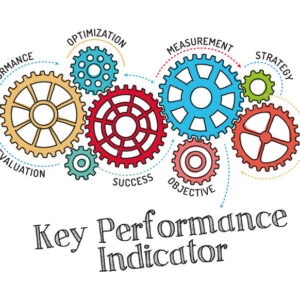
A recent study by the ANA Media Leadership Growth Council shows that data quality is on the rise as a KPI measurement. As a long-time provider of multi-channel marketing contact data, quality over quantity has been one of my driving principles. Don’t get me wrong, we have a large quantity of data, too—but the reason our data is so valuable for clients is because of its accuracy. So it’s interesting to see more marketers recognizing that quality is a major factor for business today.
The study asked participants which KPIs they used most and valued most—recognizing they’re not always the same—as well as which KPIs were gaining in importance for their organization and which ones were not valued. Here are my top four takeaways from the report and how they may impact marketing going forward:
- The most important metrics are not always the most used. The study identified 39 KPIs and grouped them into categories of Audience Measurement; Efficiency; Exposure Counting; Measurement Quality; Outcome; and Other. Many of the “most used” KPIs in the study are focused on the top of the marketing funnel—like cost, reach, site visits, and impressions—measuring the initial quick impact rather than the full response. While nine of the 12 “most important” KPIs relate to outcome or quality, such as ROI, customer lifetime value, conversion and data source quality. These categories are of top importance for marketers, even if they’re not used the most.
- Marketers want metrics with meaning. All of the new or emerging KPIs of importance in the study relate to measurement quality or outcome. Quality can be hard to gauge and can vary based on the channel. With email contact data, quality is usually based on validity—is the email address valid and deliverable? For example, at our company, Outward Media, Inc. (OMI), our contact data is guaranteed to have 95% email validity for the first 30 days. When it comes to measuring the value of data, it’s clear marketers care about the quality and the results—and they want KPIs to measure them.
- Quality data means reaching the right audience. The two quality-focused new and emerging metrics noted in the study, Data Source Quality and Targeting Information Quality, are closely related, reflecting the direct impact between data quality and the ability to target the right audience. The report also pointed out that there’s been a shift from buying media to buying audiences. This is especially true as omni-channel marketing becomes essential to connect with buyers. Marketers need to be able to reach buyers across email, mobile, and social as well as on their personal and business devices. Focusing on quality, marketers should be asking questions like, is the data segmented correctly? Are the demographics accurate? And, am I actually reaching the right audience? Having quality data means you can reach the intended audience as you expect, regardless of the device or channel.
- The need for data quality will drive marketers to find new data solutions. With the decline and eventual removal of support for third-party cookies, marketers are turning to new, innovative data strategies. And this bodes well for improving data quality too. One such strategy that’s gaining traction—and for good reason—is the use of an identity graph, which is a collection of known customer or prospect identifiers pulled from data sourced from multiple providers. With an identity graph, marketers don’t have to track down separate information such as Facebook usernames, email addresses, IP addresses, phone numbers, etc. All of the information is anonymized and stored securely in the identity graph profile so it can be taken to a demand-side platform (DSP). From there, the campaign is delivered to your target audience’s office desktops, personal smartphones, tablets, or TVs. And because the identity graph uses data from multiple quality sources, these sources combine to ensure even greater accuracy for marketers.
With more data available than ever before, it’s important for marketers to use that data to drive the best results for their business. And that starts with using the right, properly sourced data.
Digital & Social Articles on Business 2 Community
(64)








